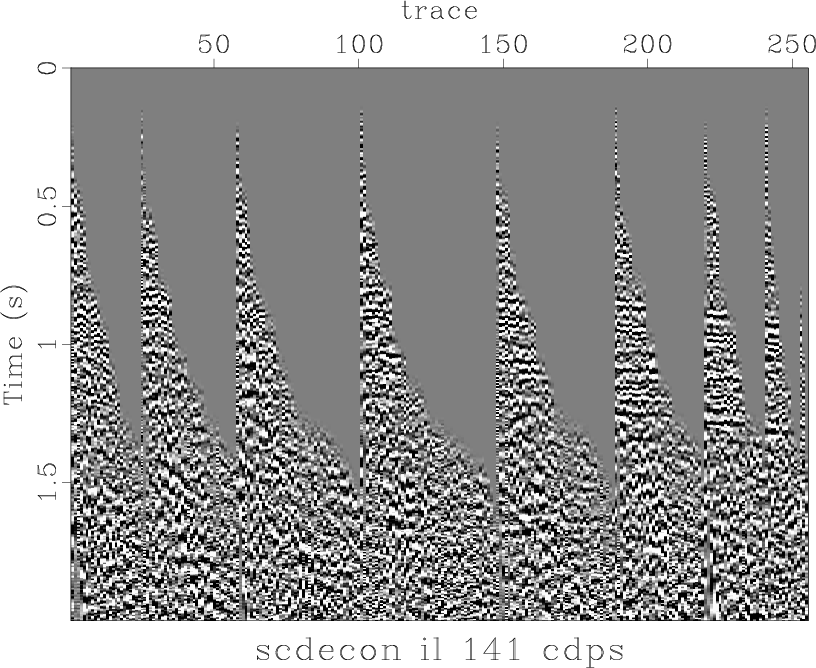|
|
|
|
Processing the Teapot Dome Land 3D Survey with Madagascar |
Previous sections ``first look'' and ``surface consistant decon'', applied normal moveout with a single velocity function from the file: $RSFSRC/book/data/teapotdome/Fetchpaper/npr3_dmo.vel.
This section interpolates the velocities so NMO can be applied with a space variant velocity field, V(t,x,y), and the stackes the data.
Starting from the $RSFSRC/book/data/teapotdome/scdeconpaper directory, you can look at the SConstruct file for stack with V(t,x,y) with the commands:
cd ../velspaper gedit SConstruct
There are two stages for this process. First the velocity is interpolated with a python program, interpvel.py to every to every (t,xline,iline) location. The interpolation is linear in time and uses radial basis functions in space. The interpolated velocity is saved in an rsf file and displayed (Figure 13). The second stage is to apply NMO using this velocity field using sftahnmo and create gathers with NMO and stacks. As each trace is processed by sftahnmo, the (t,xline,iline) is read from the trace header and the velocity function for that location is read from file created by interpvel.py. A few CDP gathers and a stack of iline 141 are created and shown in figures 14 and 15. These can be compared to processing with a single velocity function in figures 11 and 12.

|
|---|
|
vel3
Figure 13. The downloaded velocity field velocity field, npr3_dmo.vel, interpolated using radial basis functions. |
|
|

|
|---|
|
vtxycdps
Figure 14. A few CDP gathers from iline 141 with NMO using V(t,x,y) applied. |
|
|

|
|---|
|
vtxystack141
Figure 15. Stack of iline 141 with NMO using v(t,x,y). |
|
|
|
|
|
|
Processing the Teapot Dome Land 3D Survey with Madagascar |